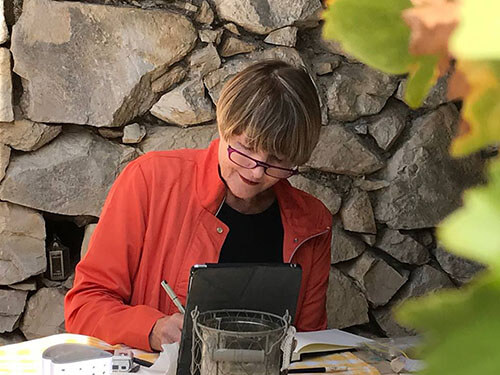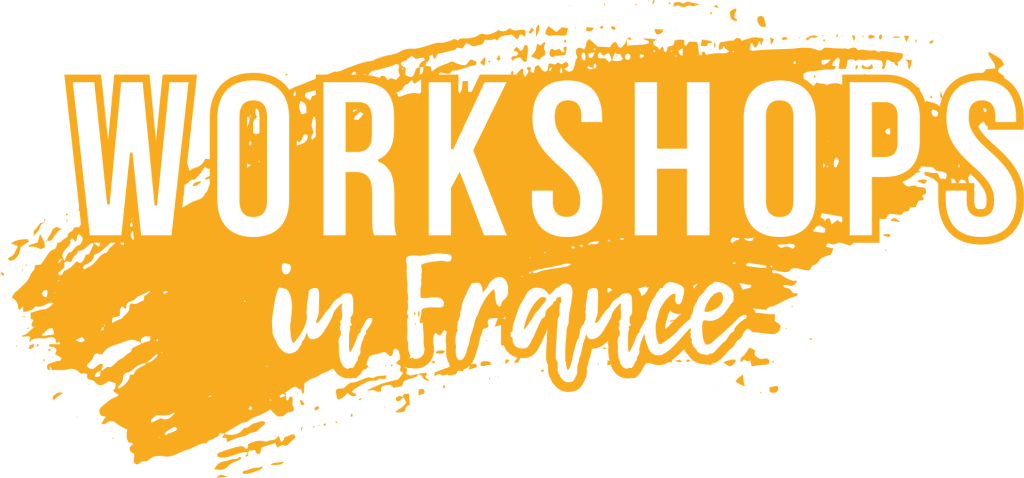What to Bring on Plein Air Trip. Besides Your Painting Supplies.

As far as actual painting supplies go, there are many lists of what to take when plein air painting. Just Google them. Over the past 10 years of delivering plein air workshops and after 1000s of paintings outdoors, we have discovered there are other things that can save the day which might not be obvious and are not on everyone’s list. In addition to painting gear, what else qualifies as handy, timesaving and essential to your painting enjoyment? Some may consider these superfluous, especially if weight and distance are real factors—but bear in mind we do bring our guests as close as possible to painting locations to avoid such burdens. Some of our recommendations are: 1. Multi-tool Very handy when you cannot unscrew that lid off a tube of paint. Or you wish you had a pair of scissors. Or your French easel’s wing nuts need an extra torque. 2. Spring Clips Clip canvas to a board, provide extra security for your umbrella, or clamp on a holder to support the handle of your solvent wash tank. 3. Collapsible Cups This is for, um, drinking. Just watch what you drink when you paint (just sayin’). If your paint is water-based, such an item is an obvious space saver to hold water. 4. Water Okay, this is probably on every list—as it should be every time you go and paint anywhere. Dehydration can completely ruin your efforts. We do provide bottles of water for guests in our workshops, but just to be ecological we encourage them to refill bottles from the tap. The water at the various chateaux is fine (you can even find the same water bottled, labeled and sold in the village). 5. Bear Spray Yep, you read that right. The contributor of this tip says “I always carry it if I’m painting alone (I’ve had a few creepy incidents and feel safer with it). I’d recommend it for anyone painting alone, especially in a remote location. Sometimes we can get so immersed in our work that we aren’t alert to potential dangers. It’s similar to pepper spray but not designed to debilitate bears, so it’s not as strong as pepper spray. It is designed to deter and stop a charging bear.” 6. Your Smartphone Maybe this is a redundant point—do we ever go anywhere without it? But nowadays it’s become the go-to tool. Its camera is the most ubiquitous tool—you can take reference photos, convert them to black and white to see the values in the scene. iPhones have a compass, so you can track the movement of the sun and decide where to set up in relation to this important piece of information. You can set a timer, tell the time, text a friend, send for back-up, play music, make or dictate notes. Geo-tag your photos so in the future you can return to that exact same spot. 7. Baby Wipes Baby wipes are great to have on you for so many reasons. Spills, drips and splashes – wipes to the rescue. Let’s face it, art is messy. But we have also used baby wipes to clean brushes, they clean them so much better than paper towels. Once you try them, you will probably never go back to paper towels. 8. Bug Spray If you’re me, you cannot leave without it. I am irresistible to mosquitoes and the like. If you stand next to me, you’ll probably not need any, as the mosquitoes will be seeking me. I spray my exposed limbs, my shoes and my hat. I often use natural repellents that are heavy on citronella. It has a strong smell—sorry, but it works. 9. Nitrile Disposable Gloves Even if you don’t wear gloves to paint, these are great to have anyway. If you have to tackle anything you’d rather not handle because it’s dirty, use the gloves. Emptying garbage, pumping gas, cleaning you palette, wiping down your equipment is always easier if you don’t get your hands dirty. And they take up next to no room. 10. Carabiner A carabiner can serve to suspend a solvent wash tank. It can be used to suspend a weight to hold your easel steady in the wind—just fill your backpack or your garbage bag with a few rocks and hang it from the center of your easel. Then, after you’re done you can use it to clip your solvent tank or trash bag to the outside of your backpack. Region Specific You may need to bring very specific supplies depending on where you paint. For example, in certain zones you may need to worry about snakes. If you’re painting in Northwest Europe, you have to think about rain gear. If you are very far north you may need additives to prevent your paint from freezing. Good luck and happy painting! Thanks so much to Jane Hunt, Celeste De Coudres and Fallon Peper for their input. Blogger: Julie Snyder Julie Snyder is a professional artist and also the programs director of Workshops In France. A native of Scotland, she is a seasoned traveler who splits her time between California and France. You can learn more about her role with Workshops in France here.
Do you measure up?

Does the idea of coming to an art retreat scare you? Over the years we have heard people say that when they first came to one of our workshops or retreats that they were nervous. Their nervousness stemmed from things like flying, traveling alone, and the general unease caused by the unknown – but by far the biggest cause was the feeling that they might not “measure up”. Interestingly, the people who confess this tend to be the ones who have gained the most out of the retreats, as they have learned so much from painting alongside other artists! We offer two different types of experience, the Uninstructed Retreats and the Instructed Workshops. During both you find that the initial unease evaporates as each one is designed to allow you the space to grow as an artist. You will enter a “no-judgement” zone with Workshops in France. Our 2024 recipient, Sahil Singh Masand, traveled from India to Spain and then to Provence to join our workshop with Jane Hunt and Michele Usibelli. Sahil is now studying at the Barcelona Academy, refining his skills while dreaming of capturing the world through his art. We recently caught up with Sahil to find out about his progress, get feedback about his experience as a scholarship recipient at our workshop, and get the inside scoop on his exciting future plans. The Instructed Workshops are all about learning directly from a master, and we make sure that the people we chose to instruct with us are sensitive to our guests. They too were beginners at one time and are considerate of their students. There will be lots of discussion and everyone will learn from each other as well as the master. We will be following the grand tradition of artists travelling and painting together in the south of France. During the Uninstructed Art Retreats, we have individual mentoring available and we are happy to give demos. Our guests find them most useful when key points such as values, perspective and composition are explored. The uninstructed retreats are where artists tend to share the most with each other, as tips and skills are passed around as generously as the wine. So, are you good enough? We welcome every artist, from fearless beginners to consummate professionals. We recommend that you throw caution to the wind and to remember that the only person you are in competition with is yourself!The Instructed Workshops are all about learning directly from a master, and we make sure that the people we chose to instruct with us are sensitive to our guests. They too were beginners at one time and are considerate of their students. There will be lots of discussion and everyone will learn from each other as well as the master. We will be following the grand tradition of artists travelling and painting together in the south of France. During the Uninstructed Art Retreats, we have individual mentoring available and we are happy to give demos. Our guests find them most useful when key points such as values, perspective and composition are explored. The uninstructed retreats are where artists tend to share the most with each other, as tips and skills are passed around as generously as the wine. Blogger: Shirley Hambrick Shirley Hambrick is an award-winning stained-glass artist and painter. She has lived in Scotland, Spain and the USA. Shirley has been part of the Workshops in France team over the last few years and attended over 10 of these trips. Being Scottish, she was trained at Edinburgh College of Art and Design. Shirley teaches in the West Virginia area and you can some of her beautiful work here.
